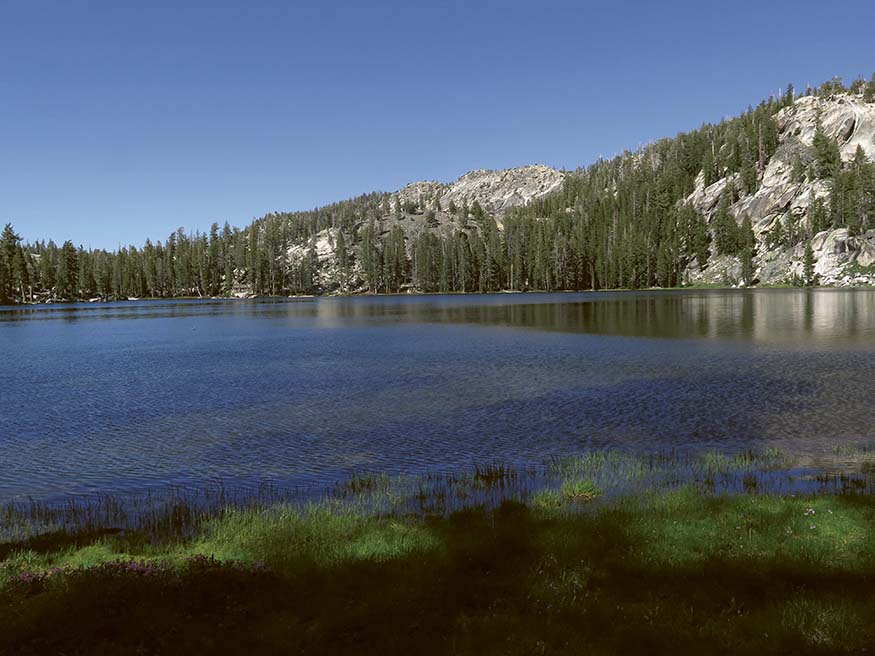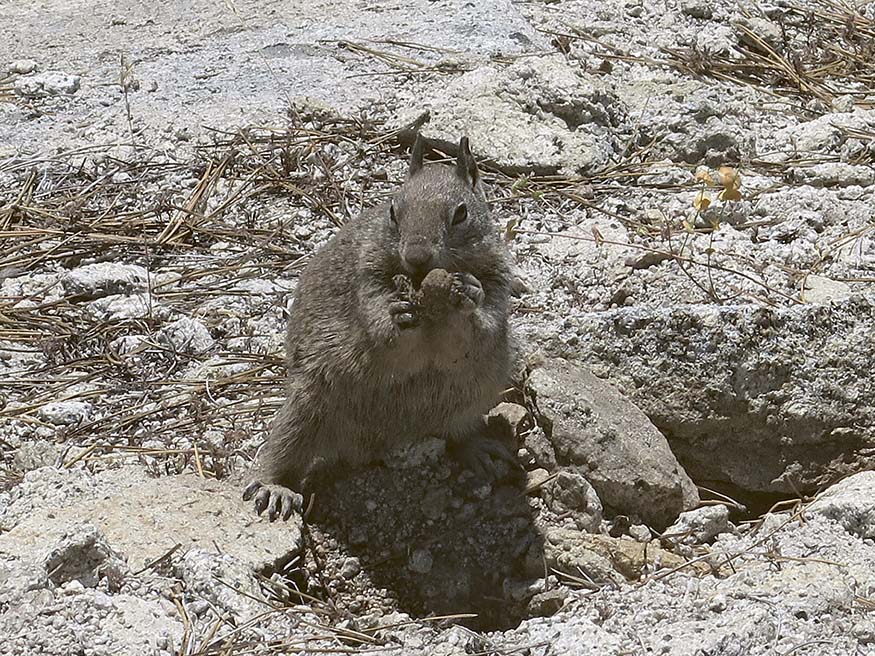
Central Yosemite
Lake 2 in the Ten Lakes Basin (see Trail 21)
The most conspicuous and perhaps most photographed feature of Central Yosemite is Tenaya Lake, which is skirted by the heavily traveled Tioga Road (also known as CA 120). On a windless day the sandy beach on the northeast shore is sublime, while on a cooler day, the more bouldery southwest shore is much more pleasant. The sandy beach of the northeast shore is lacking here, but so too are the strong upcanyon winds that were needed to form it. Instead, you can wade in smaller sandy bays or find a few small boulder islands worth swimming or wading to.
From Tenaya Lake’s southwest shore, southeast of Tioga Road, this chapter’s first two trails begin, bound for very different destinations: the three Sunrise Lakes and aptly named Sunrise High Sierra Camp versus the summit of Clouds Rest.
To view all of Central Yosemite, and indeed, most of the park, make the safe, relatively easy ascent to the area’s highest peak, Mount Hoffmann. From it you’ll see dozens of features identifiable with a topographic map of the park. Walks to lakes are always popular, and the three subalpine lake clusters described in this chapter are all popular—the very-easy-to-reach May Lake on the way to Mount Hoffmann, the trio of Sunrise Lakes en route to Sunrise High Sierra Camp, and the longer walk to the charming Ten Lakes. Too many folks visit only the three most easily reached Ten Lakes, leaving the other four with only moderate to light use (not to mention the three that are tiny tarns).
North Dome is an unmistakable feature rising above the east end of Yosemite Valley, opposite from Half Dome. While rock climbers can reach its summit by first climbing vertical Washington Column and then the near-vertical south face of the dome, the vast majority of folks prefer to take a relatively short and easy trail heading south from Tioga Road. As atop Mount Hoffmann, the summit of North Dome provides panoramic, remunerative views, especially across Yosemite Valley and to Half Dome.
Finally, the Central Yosemite chapter ends with an ordinary looking, but quite unique and rare lake, Harden Lake. Whereas the vast majority of Sierran lakes owe their existence to glaciers excavating basins out of weathered and fractured bedrock, Harden Lake (and nearby Lukens Lake) owes its existence to water ponded up behind glacial deposits known as lateral moraines. In the case of Harden, the deposits are thin and the lake leaks, so that by midsummer it is quite shallow, whereas Lukens Lake, reached by a choice of easy trails from the White Wolf area, retains its depth all summer.

California ground squirrel